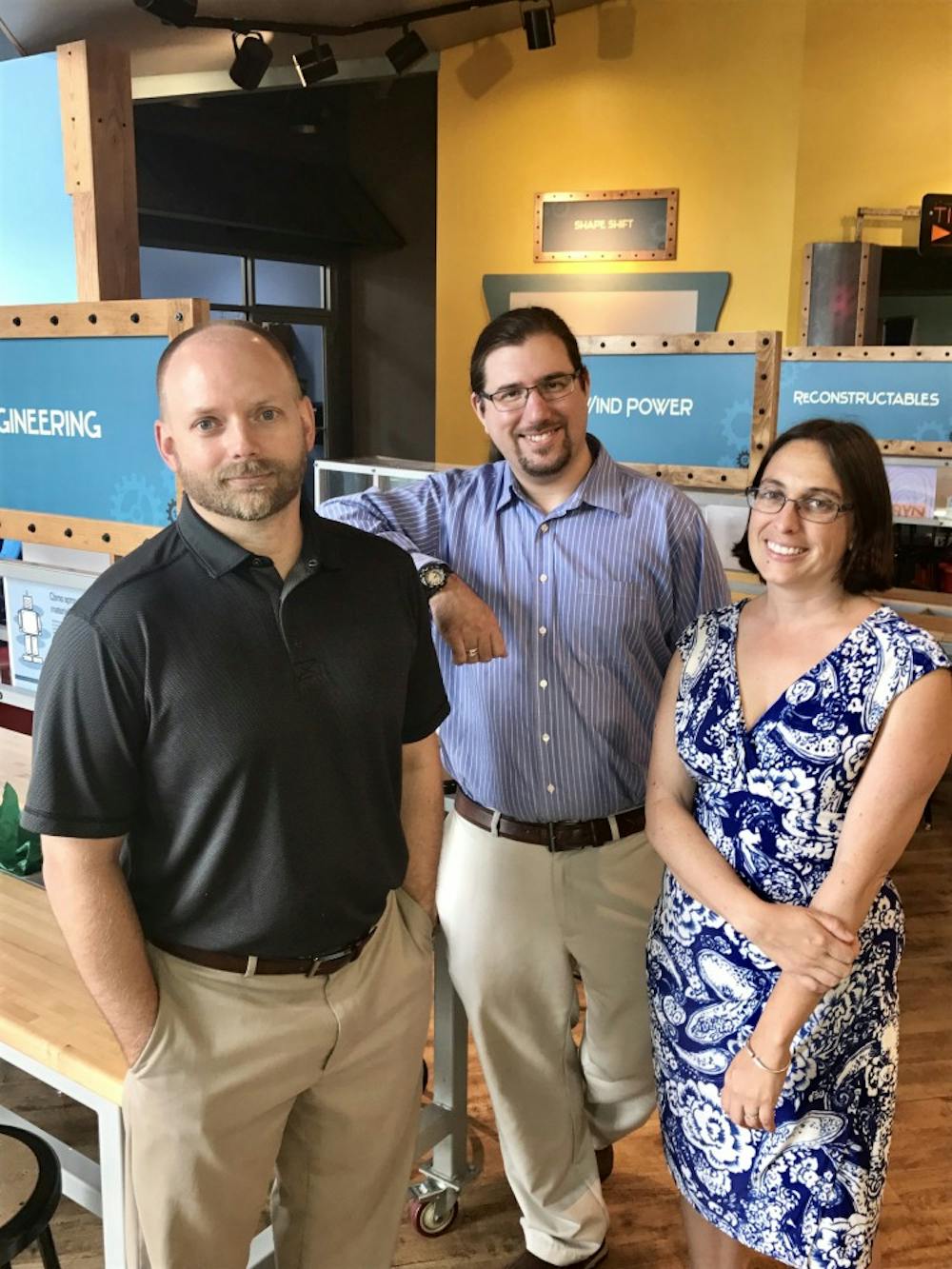The United States is facing a severe shortage of people trained to take jobs in the fields of science, technology, engineering and math (STEM). These are among the fastest growing occupations in the country, however, there are not enough educated scientists, engineers and mathematicians to fill these roles.
USC professors Adam Hartstone-Rose, Kelly Mulvey and Matt Irvin recently received a $1.3 million grant from the National Science Foundation (NSF) to analyze the efficacy of informal science learning centers and their ability to influence students to pursue STEM careers. This grant was in conjunction with a £800,000 award from the Wellcome Trust awarded to a group at Goldsmiths, University of London with whom Hartstone-Rose, Mulvey and Irvin will be collaborating with regularly.
The group will be partnering with nontraditional learning sites around the country such as Edventure, the Riverbanks Zoo and the Virginia Aquarium to determine the effectiveness of certain practices and find the components of what makes a good program.
Informal science learning centers are programs at sites such as museums, aquariums and zoos where students get an opportunity to learn outside of the traditional classroom. “These team programs evolved, somewhat, independently at all of these different types of institutions and we have the theoretical foundation for why we think they should be doing great things ... but no one’s ever really evaluated that formally,” Hartstone-Rose said.
Another goal of the study is to identify how these programs encourage young people from different backgrounds to view STEM as a field that anyone can pursue. Mulvey hopes they can show, “there is not a one cookie-cutter image of who can or should be a scientist but that lots and lots of people could enter the STEM workforce.”
As of now, the STEM labor pool is "largely homogenous," according to Mulvey, with most of the people entering these fields consisting of middle to upper class white men. To better understand this issue in STEM, the sites in the US target diverse groups in terms of ethnicity, gender, disabilities and socioeconomic backgrounds.
This study will last five years, and the children enrolled will range from as young as 11 years of age to high schoolers. The group is doing their initial survey data collection now and plan to add a new cohort of children every year until the grant period ends.
Once recruited for the project, the students will complete four surveys per year where they will answer a variety of questions. These questions look to identify things such as the classes these students are taking, their engagement in these courses, their career aspirations and how far they think they will go in school. These surveys also delve into the students' identities, asking them whether they perceive themselves as scientists and what they perceive a scientist to be in gender and ethnicity terms.
With this research, Hartstone-Rose, Mulvey and Irvin hope to develop hands-on guidelines, Mulvey says, for the most effective practices to help other informal learning sites encourage students to choose STEM careers. In the future, they are excited at the idea of pursing additional funding to follow up with these students and see after they finished college if they chose careers in STEM, went on to graduate school or wound up on a different path entirely.
If you are an undergraduate and would be interested in joining in on Hartstone-Rose, Mulvey, and Irvin’s research, reach out to stemteens@sc.edu. There are many sources of funding for undergraduate research at USC. For more information visit: http://www.sc.edu/our/.

